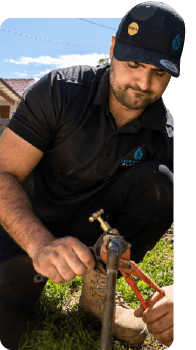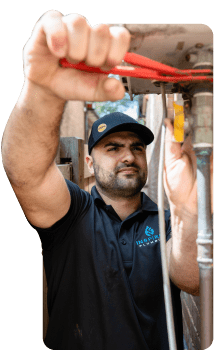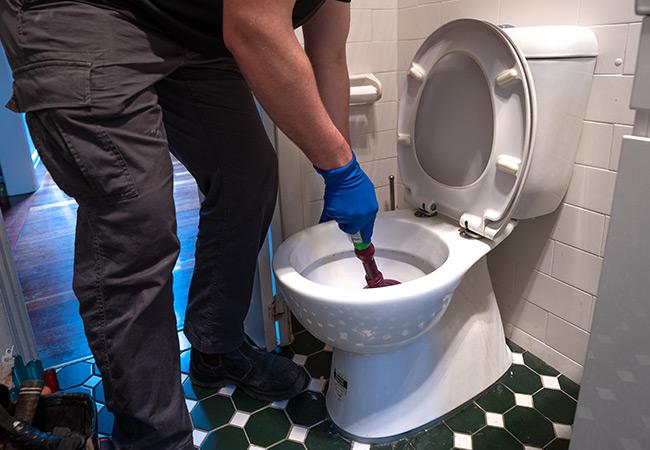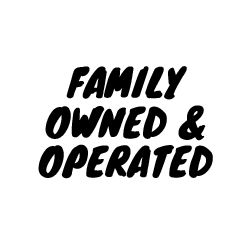we're open

Book now
Click to book a plumber
02 9158 3565
24/7 emergency service
Click here for
a free quote
a free quote









Blocked or malfunctioning toilets are arguably the worst type of blocked drain you can have in your home. They are a huge inconvenience and be very unpleasant. But don't worry, because with over a decade of experience unblocking toilets, our expert plumbers at Inspired Plumbing can easily, efficiently and inexpensively unclog or repair any toilet.
We can diagnose your drainage problems and give you expert solutions and advice. Contact Inspired Plumbing today.









Blocked Toilet? No Worries - We’ll Be There to Deal With This Messy Situation
Did one of your kids try to flush a sock? Maybe someone used a little too much toilet paper or forgot to put a sanitary wipe in the rubbish bin instead of the toilet? Whatever it was, you’re now facing a blocked toilet - an unpleasant situation indeed. We all know what toilets are for, and no one (except maybe toddlers) likes to talk about it. But when there’s a backed-up or blocked toilet, you should call us and tell us all about it, so we can get that blocked drain cleared ASAP!
Your professional plumber will come over right away to take care of the problem for you and, of course, clean up meticulously when they’re finished. No lingering concerns or extra work for you! Our plumbers are well-versed in toilet “anatomy” and know what strategies and tools are needed to get rid of clogs. They also understand how to keep the area surrounding the toilet safe and sanitary. When you hire plumbing professionals like ours, they get the job done on time, and to the highest standard! Now, let’s consider household toilets and take an in-depth look at the problems that can occur because of how they function.
Anything from a tree root destroying your sewer pipes, to a children's toy getting flushed can cause a your toilet to back up and block. Below we discuss the main components that cause a blockage.
A toilet flushes because a flapper valve opens when the flush handle is pressed down. This valve opens into the toilet’s P trap (or an old-style S trap). The water and waste then travel through a pipe that’s connected to a shared drain line, then the stack (the home’s main drainpipe), and on into the sewer or septic system.
In many ways, a toilet is a perfect machine. It takes no fuel, and unless there’s a clog, it does its intended job every time. Flushing a toilet is an effect of gravity and water pressure.
A toilet clog forms when either the toilet’s trap or its drain line is jammed with substances that have become too dense to pass through. Toilet drains often start to clog when too much toilet paper or paper hygiene products are flushed at once.
Be aware, though, that not every clog causing a blocked toilet is necessarily in the toilet itself -- or even originated in the toilet. Many drains feed into the same drain line, and any one of them (the kitchen sink, for example) might be the cause of the blockage. Tree roots in outside pipes further down could be to blame as well.
Although some water might pass through a clog at first, eventually, the addition of additional solid waste will stop the flow. With nowhere for the water to go, the bowl fills, possibly until it overflows.
The tank is the part of the toilet that stores approximately 7.5 litres of water needed for one flush. This water is stored in the tank. It would take too long for this amount to flow through the water supply pipes for each flush.
Flushing the toilet starts when you push down the handle or button. If you were to remove the lid and look inside the tank, you’d see that pushing the handle lifts a valve to release the stored water into the toilet and empty the accumulated waste. It swishes down the sides of the bowl to clean them.
When the water in the tank drops low enough, the toilet float (the balloon-like device in the tank) drops onto a lever, thereby opening the fresh water valve to refill the tank.
Once the float actually floats back up to a certain point, the water shuts off.
The siphon is the mechanism that keeps the bowl’s water level consistent. You can tell it’s working by pouring water into the bowl and noting that this doesn’t change the water level. The siphon naturally keeps the water in the bowl at its level.
This is why you can still flush your toilet, using a bucket of water, when the plumbing has been shut off.
The toilet bowl, of course, is where the waste goes. The bowl would hold about twice as much water as the tank, but, unless it’s a blocked toilet, the bowl never fills more than about halfway.
The toilet rim is simply the top of the bowl. It’s where the replaceable toilet seat and lid are attached.
This part of the toilet can't really contribute to blockages, and doesn't play any role in your blocked toilet.




For mild, easy to shift blockages, there are a few ways you can attempt to unclog a blocked toilet yourself, the most common of which is using a toilet plunger. You can also wear rubber gloves and reach in with your hand and maybe a bent coat hanger to try and pull out the clog.
You can also try to break up the clog using baking soda and vinegar. First, make sure the water level in the bowl is about half. Then, pour in 250ml of baking soda. Follow this by gradually adding 250ml of vinegar. Allow it to fizz for at least 20 minutes.
If these strategies don’t clear your blocked toilet, no problem. You should definitely give us a call.
After all, looking at toilets is a big part of what our expert plumbers do.
When they look at your toilet, they’ll figure out what’s clogging it and decide which of our many tools can make it functional again.
Don’t worry. We’re in the business of handling blocked toilets. It should be our concern, not yours.
We’ll have that blocked toilet freed up in no time - and leave your bathroom clean and tidy when we’re through.
